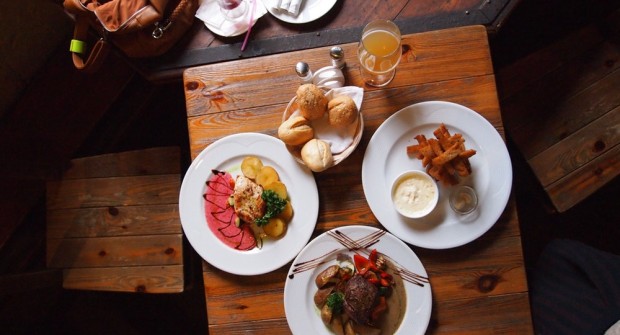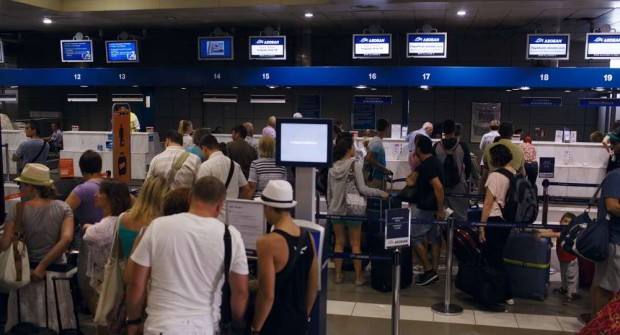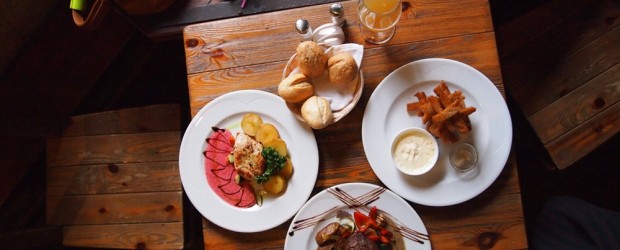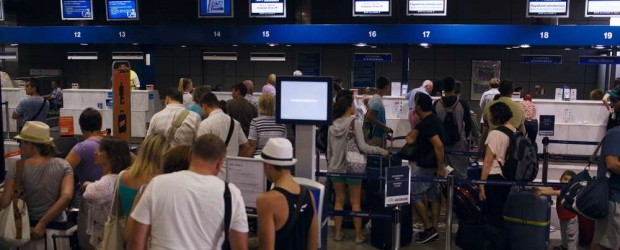The central business district and adjacent Darling Harbour are 10km north of the International Airport and takes approximately 20 minutes to reach by car. A taxi costs approximately A$25. A regular airport to city bus service operates from approximately 0600 to 2100 hours (not recommended for those with large amounts of luggage). Any queries please see the Travellers Information Desk at the Airport.
Taxis: Taxis in Sydney operate under 2 pricing structures. From 0600 – 2200 hours the standard fare applies. On the left hand side of the taxi meter, above the word “rate” you should see the number 1. From 2200 – 0600 hours, a 20% night tariff applies, at these times the meter should be set on rate 2. Please check the meter is set correctly when you begin your journey.
Trains: There is a train station located at both the Domestic and International Terminals at Sydney Airport. Trains run on average every 10 minutes during the day on a weekday and every 15 minutes on weekends. From the Domestic Terminal, it takes 10 minutes to reach Central Station and 15 minutes to Circular Quay. From the International Terminal it takes a few minutes longer.
Lifts are available at both the International and Domestic Terminals for the easy transfer of luggage.
Fares from the Domestic Terminal to the City start at $10 per adult single and $15 day return. For further information on the service that the Airport Link provides, please see the following website: www.airportlink.com.au.
Banking/Currency
Decimal currency is used in Australia with the dollar as the basic unit (100 cents = $1). Notes come in $100, $50, $20, $10, and $5. Coins come in 5c, 10c, 20c, 50c, $1 and $2 denominations.
Currency exchange facilities are available in most banks, hotels and airports and operate normal business hours. Credit cards are accepted at most restaurants and shops, the most widely used being Mastercard, Visa, American Express and Diners Club.
Business Hours
Banks generally open from 0930 – 1600 hours Monday – Friday. General office hours are 0900 – 1700 Monday – Friday. Post Offices operate these hours, however stamps are often available from hotels.
Climate And Clothing
April is autumn and the temperature range is 15° to 23°. Sydney expects to enjoy an Indian summer during April, but like all coastal cities its weather can change quickly.
Generally Australians are informal dressers. We suggest you bring a jacket and tie with you for special occasions. A light jacket is recommended for evenings. Please see the social program for dress details at social functions.
Eating Out
Bistros, restaurants, cafes and coffee shops offer varied menus, prices and decor. Local specialties such as seafood and Australian wines are worth trying. At some restaurants you can keep the liquor bill down by taking your own wine or beer. These are called BYO restaurants, an abbreviation for bring your own.
Electricity
Electrical current is 240/250V, AC 50Hz. The Australian three-pin power outlet is different from that in many countries, so you will need an adaptor. If your appliances are 110V, check if there is a 110/240V switch. If not, you will need a voltage converter. Universal outlets for 240V or 110V shavers are usually found in leading hotels.
GOODS & SERVICES TAX (GST) / TOURIST REFUND SCHEME (TRS)
Since 1 July 2000, Australia adopted a new taxation system incorporating the Goods & Services Tax (GST). All prices quoted in this brochure are inclusive of GST, unless otherwise specified.
As part of this taxation system, the Australian Government introduced the Tourist Refund Scheme (TRS). The scheme is administered by the Australian Customs Department and took effect on 1 July 2000. The TRS enables travellers departing Australia to claim a refund of the Goods and Services Tax (GST) and Wine Equalisation Tax (WET) paid on goods bought in Australia. The refund only applies to goods, which travellers take with them as hand luggage when leaving the country. It does not apply to services or goods consumed or partly consumed in Australia, however the goods can be used before departing Australia.
Language
The official language for the Symposium is English. For interpreting assistance, please contact the Symposium Managers.
Parking
Parking is available at the Symposium venue, The Sydney Convention & Exhibition Centre, as per the following rates:
1 hour = A$6.00
1 – 2 hours = A$12.00
2 hours + = A$18.00 (daily maximum charge)
Passport & Visa
All travellers to Australia, other than New Zealand, require a valid entry VISA prior to travel to Australia. For many nationalities (29 in total) an Electronic Visa or Electronic Travel Authority (ETA) can be obtained from your travel agent or airline when making your travel arrangements. Please see your travel agent or airline for further details.
Planning Your Travel
Because of time change and jet lag, the Organising Committee suggests you consider arriving in Australia by 4 April, 2003. This will enable you to relax and familiarise yourself with your hotel and its surrounds before the start of the Symposium. Don’t forget you will lose a day traveling across the dateline from the US – only to gain it back on the return flight.
Quarantine
Australia is free from many plant and animal diseases prevalent in other countries. Very strict quarantine rules apply to the import of animals and plants, which cannot be brought into the country without prior application. Animal and plant products are also restricted.
Shopping
Shops in Sydney open from 0900 to 1730 during the week with late night shopping on Thursday. On Saturdays, most shops open from 0900 to 1600. On Sunday, Darling Harbour shops are open from 1000 to 1800 and major department stores in the centre of the city are open from 1000 to 1600.
Time
Sydney is 10 hours ahead of Greenwich Mean Time.
Vaccinations
A current valid international certificate of inoculation against yellow fever is required if passengers come from, or travel through, infected areas. Check this carefully with your airline or travel agent.
Tipping
Tipping is not as widespread or regulated in Australia as it is in other parts of the world. Tipping is your prerogative, a reward for service. It is customary to tip hotel porters and a gratuity of about 10 per cent is usual in restaurants if good service is received. Tips for taxis are regarded as optional.
Read More →



